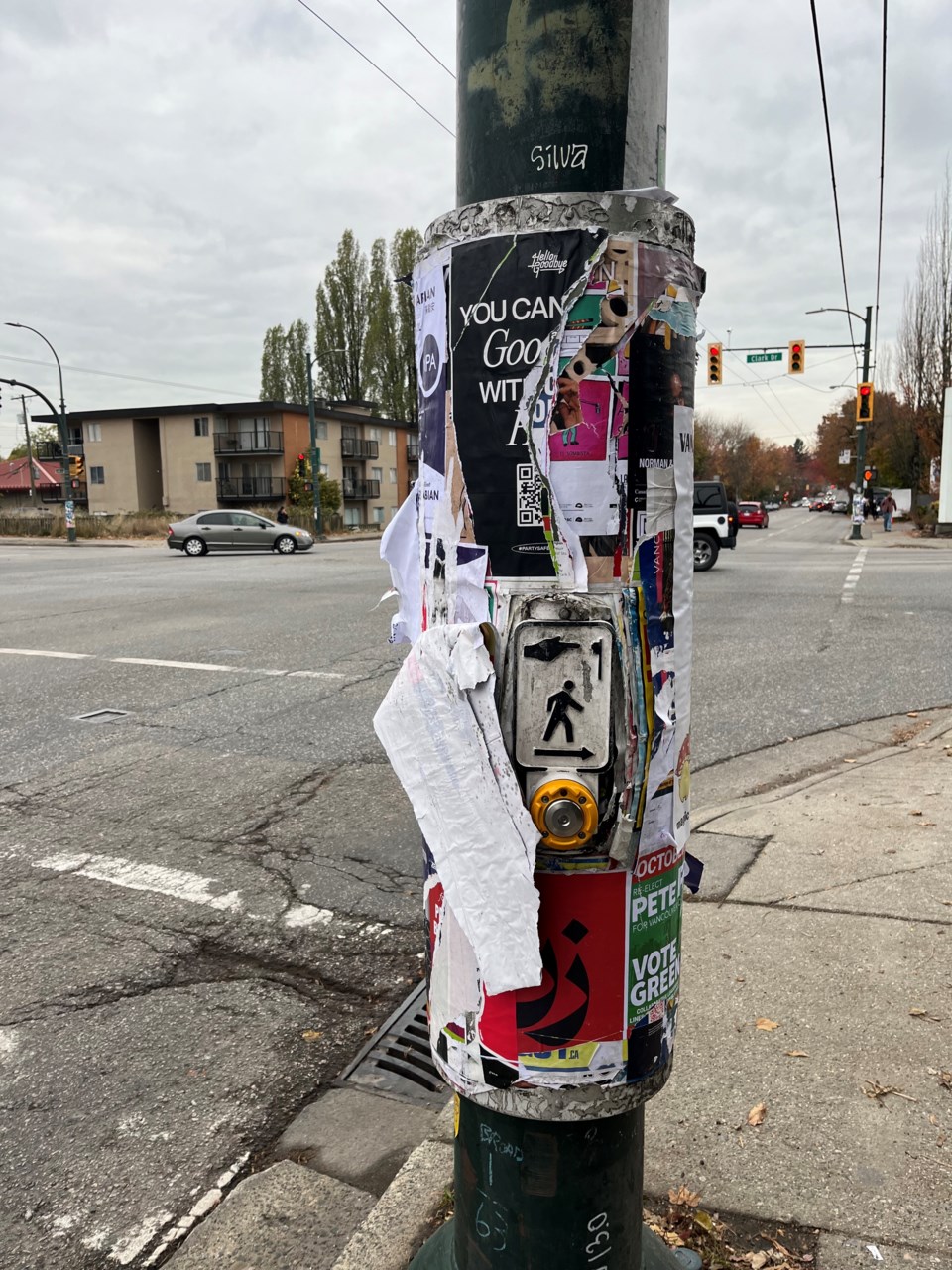Every city has its quirks (according to foreigners, Vancouver has plenty). But one Vancouver quirk in particular even has locals baffled.
When approaching a pedestrian crossing, it's expected that the button to activate the walk signal would be at arm height on the side of the pole closest to the person, and for the most part that's true.
But what about when it's on the side closest to the road or pointing in the wrong direction? Is it a mistake or some sort of bizarre city planning.
There are cyclist-specific buttons that face the street but they are usually attached to their own pole next to a bike lane and have a little figure of a bike on it. What about the ones that are clearly for pedestrians?
A new resident from Australia asked this same question on TikTok. She shared that one time after searching high and low for the button, she gave up and sprinted across the intersection. Turns out it was hiding on the other side of the pole.
In an emailed statement to V.I.A., the City of Vancouver insists it "places pedestrian push buttons next to/near the pedestrian crosswalks and ramps with the buttons on the pole facing closest to the pedestrian ramp/crosswalk. The sign above the push buttons also provides directional guidance of the crosswalk orientation using an arrow."
Why are buttons on the other side?
If the City's policy is to install the crosswalk push buttons "facing closest to the pedestrian ramp/corsswalk" then one might infer that any buttons found on the opposite side are a mistake. However, in the video shared by Cassie on TikTok, there is a large bolt on the lamppost where the button would be which may be why it had to be installed on the other side.
When shown the video, a rep for the City of Vancouver said they could comment on the bolt or push button position because they were not certain that video depicted Vancouver.
However, V.I.A. did indicate specifically that there is a push button on Clark and Broadway that is not only on the wrong side but also pointing in the completely opposite direction. The city could not offer an immediate explanation.
"Until we send out a technician to confirm, we suspect there may be two push buttons at this crosswalk, as one may be covered by posters," the city explains. "Sometimes schools request a double pushbutton, but that is not the case at this location."
The city says that if there are issues with a crosswalk button being on the wrong side of the pole, people can file a report by calling 311.
"We will look into the request and address it if required," they say.
The misplaced buttons aren't common but they are present in Vancouver and are like a strange Easter egg when you come upon them. There isn't one general reason for the anomaly. Each instance may have a different cause which the city is unable to confirm until it's been inspected by a member of the electrical crew.
@badgalcascas Replying to @angelie! 10 things I’ve learned about #vancouver after living here for 4 months PART ✌🏽 (as an #aussie 🇦🇺) because so many of you requested this 😭 I forgot to say SAWRY if this offends anyone 🫶🏽 #canada #aritzia #lululemon #cleangirlaesthetic #fypシ #trending ♬ original sound - CASSIE 🦋
How do crosswalk buttons work?
Certain traffic lights in Vancouver are pedestrian controlled (an example would be at Main and 5th). Those crossing points can be identified by the flashing green traffic light; when the light stops flashing it indicates to traffic that a pedestrian has pushed the button and it's about to turn yellow so they should adjust their speed in preparation.
Other traffic lights in the city aren't controlled by the buttons at all and are on timers so pushing the button won't affect when the light will change. It will however activate wayfinding noises for the visually impaired to help them cross.
Both of these categories make up a very small proportion of the pedestrian crossing buttons in the city. The majority fall somewhere in between. They are on timers during peak hours and the walk sign will come on regardless of whether or not someone pressed the button and during off-peak times they change when someone pushes the button.
According to the city website signals aren't installed at all on residential streets unless "they intersect an arterial or secondary arterial road."
Spot a crosswalk push button that appears to be in the wrong position? Snap a photo, take note of the exact location, and send V.I.A. the image and information in an email to [email protected].




